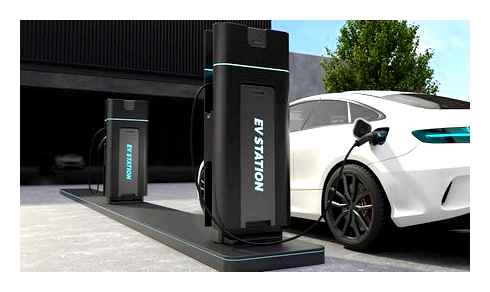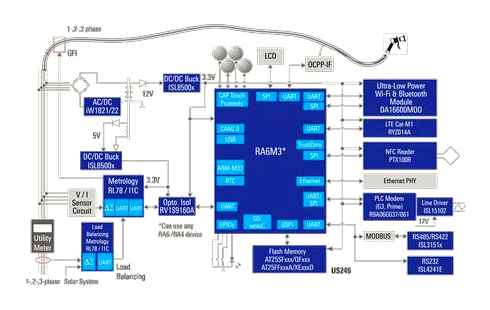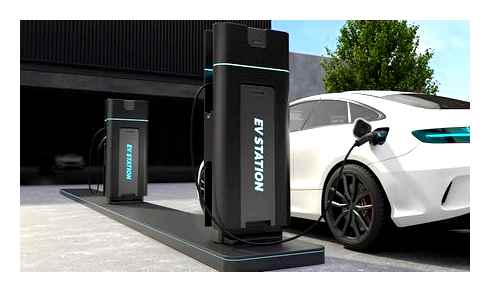How Quickly Can Your Business Pay Off Your New EV Charger? Sooner Than You Think
Years ago, Energy.gov, reported that access to electric vehicle charging stations at workplaces had doubled: 90% of employers reported their stations were in regular use 5 days a week. Industry experts and environmentalists alike have discovered the key to putting more electric vehicles on the road is to make sure there are enough chargers for potential customers to feel certain they will be able to charge their EV regularly.
Today, according to Forbes, there are 26,000 charging stations and 86,000 plugs in America, not counting home units. The time when it was okay to not have charging stations in a business garage or parking lot is long gone. There are a few different choices when it comes to purchasing EVSE, but Blink is different from the rest.
Our competitors are in the business of selling equipment. They sell you an EV charger and whatever happens to it from there is your problem. We’re not bosses and we’re not salesmen, we’re partners, and our business models are completely unique in the industry.
Because we manufacture, own, and operate our own equipment, it’s not in our best interest to create a lot of unneeded new equipment with expensive new parts. It’s also not in our best interest to manufacture shoddy equipment or equipment that isn’t cutting-edge and up-to-date, since we’d be the ones paying to replace it.
Our business is your business. We succeed when you succeed. Access to our proprietary Blink Network allows our partners to set hours of operation, decide who can use the charger and who can’t, how much energy they can use, remotely control the charger, and most importantly charge a fee for energy used! Finding the plan that’s right for you is easy. How long it will take to pay off your charger and start making a profit will differ by state, but also by which business plan you choose. Which plan you should choose is dependent on your type of business, your location, and other factors.
The Hybrid Owned Plan
If your business chooses the hybrid owned plan, Blink covers the cost of equipment, operations, and administration. All you need to do is make the site EV charger ready. “Hybrid” of course means “combination”, and our hybrid owned plan is a combination of plans. Your business will share costs and revenue with Blink.

Blink takes responsibility for the cost of the unit, installing, and administration while sharing 40% of profits with the host. The hybrid share model allows your location to provide the charging station to customers while Blink provides the equipment, operations, and administration. Your business should begin making a profit as soon as its share revenue becomes greater than shared cost, within a couple of years, but advertising, signage, etc, can help your charger turn a profit faster.
Blink as a Service Plan
Blink’s subscription program provides an EV charging station host with lower costs and all the control of ownership without any of the hassle.
The Blink as a Service Monthly Subscription Model is perfect for those who want low upfront costs, yet all the control of ownership. Blink’s subscription program provides your location with EV charging stations at a low monthly cost and all charging revenues.
Blink pays for the equipment and the installation, while the host pays low monthly fees to Blink, yet the host sets their own charging fees and keeps 100% of the charging revenue for themselves.
All equipment is monitored and maintained by Blink. With this business model, you can begin to make a profit quickly. Signs and advertisement will help the public know you have EVSE on site. It would take under a year for your business to begin making a profit over and above the 99 monthly subscription fee to Blink.
Blink Owned Plan
In the Blink owned business model, Blink owns and operates the charger. For select locations, Blink will provide the installation, equipment, operations, and administration and share a portion of the revenues with the host.
The Blink-Owned Business Model is perfect for high-traffic, publicly accessible locations that will have frequent use. This turn-key solution is for select locations where Blink provides EV chargers, electricity reimbursement, and a revenue share. In this model, Blink covers everything!
There is no upfront cost. The equipment, preparation of the site, installation, electricity, monitoring, and maintenance are all provided by Blink, at our expense. There is no subscription fee, and the host still collects 5% of the charging revenue. With this business plan, you can begin making a profit on your EVSE the moment it’s out of the box.
New profit center: Electric vehicle charging stations
Many carwash operators have some awareness of the growing numbers of electrically powered vehicles which, based on National Auto Registration Data, account for 3% of all registered automobiles today. The electric vehicle (EV) population is projected to grow to 10% of all registered cars by 2025 and 40% by 2030, as reported by Federal data.
Related Articles
In some states, such as Arizona, Nevada and Florida, the EV population is already in excess of 5% and in California, it is already at 10% or more.
The current Federal administration’s Green Energy policy is aggressively focused on maximizing EV ownership. In fact, there are incentives being offered to new EV buyers in the form of a 7,500 tax credit.

In order for the previously mentioned projections to be achieved, the Federal government has recognized that a massive investment is required to create a national EV charging station infrastructure — it is estimated that the U.S. is in need of 450,000 stations. Further, this infrastructure needs to include EV charging stations that are publicly accessible.
The charging issue and potential
An EV with a fully charged battery has a range of between 250-300 miles. So, drivers planning round trips exceeding 50% of their battery range are forced to plan their trip around where they can locate one or more accessible charging stations, which is a more difficult task than it seems.
Unlike gas powered vehicles where drivers can fill-up at any one of the thousands of gas stations, the EV driver has far fewer options. However, EV drivers with smartphones can download an EV station locator map.
Is this the problem solved? No.
Just because the map shows a charging station location does not mean that it is publicly accessible. The majority of stations are installed within a growing number of hotels or within multifamily communities in lifestyle destinations, such as golf country clubs, and the use of the EV station is for guests, residents or members.
For brick and mortar businesses, the Federal government is offering a 30% Federal tax credit up to 30,000 to business enterprises that purchase and install commercial EV charging stations. The credit can be applied per location and thus meets the needs of multi-station hosts. These tax credits have been extended through 2025 to promote growth of public charging stations.
Aside from the Federal tax credit, an increasing number of power utilities are now providing rebates and incentives to EV station operators, which further reduces an operator’s capital cost if he or she purchases an EV charger.
The Rapid growth in the number of electrically powered vehicles is already taking place, which presents a great opportunity for carwash businesses — both full service and unattended — to add a self-serve EV charging station or two to the property. Use of these stations can be purchased by customers with credit card activation and operators can vary costs on a per minute of charge basis.
Having your charging stations identified on locator maps as publicly accessible will attract out of area EV traffic as well as EV owners within your local market. Not every EV driver has a home charger — people who live in apartments or condos often live on properties that do not have an EV charging amenity.
Today, consumers have the choice between a wide range of EVs priced from the high 100,000s down to the high 30,000s. Brands that produce EVs include Tesla, Mercedes-Benz, Porsche, BMW, Jaguar, Volvo, Volkswagen, Infiniti, Lexus, Ford, GMC, Chevy, Nissan, Toyota, Mini-Cooper, Hyundai and Kia. In fact, Ford is currently investing multi-millions in the construction of U.S. plants that will be exclusively producing EVs by 2025.
Regardless of whichever EV brand is purchased, there is a common denominator between drivers: the need for the battery system to be recharged.
Right now, there are only around 150,000 EV charging stations across the country. Yet, there are millions of gas pumps. Although there are the smartphone apps designating charging locations, EV drivers are at a strong disadvantage when compared to their gas powered counterparts.
Most EV charging stations are considered level-2, which add up to 30 miles of range per hour and cost drivers somewhere between 4-5 per hour of charging. For an operator running a commercial charging station, that charge costs somewhere between
Cost factor
A single pedestal with two level-2 chargers, which can service two EVs at once, costs around 7,500, not including the installation price. A pedestal with one level-2 chargers costs around 3,750. The price of installation is variable based on the distance between the master panel and the charging station location.
Level-3 DC SuperChargers are another available option, but require a 3-phase power supply and cost between 46,000-65,000 before installation. The benefit of these chargers is the greatly reduced charge time. In 30 minutes, these SuperChargers add a range of 150 miles to vehicles. A scaled down Fast Charger was also recently released, but also requires a 3-phase power supply. The Fast Charger can add up to 100 miles in 30 minutes and is anticipated to cost around 26,500 before installation.
.85-
Location suitability
Before thinking about installing an EV charging station, businesses are encouraged to take a look at their daily traffic. A minimum traffic count of 12,000 vehicles coming to a site per day is advised unless there are valid reasons why a lower traffic count can justify a charging station.
Richard S. Cooper is a Charleston, South Carolina-based independent business consultant focused on the rapidly growing need for commercial EV charging stations nationwide. Richard can work with you to determine which type of EV charging station is most appropriate for your site and coordinate supply and installation through his network of licensed commercial electrical contractors who will provide you with an inclusive quote. You can contact Richard at 843-364-5413 weekdays between 8 a.m. and 6 p.m. EST or by email at [email protected].
.95 per hour of charge at peak rates.
Additionally, by promoting the availability of an EV charging station at a carwash site through various marketing practices, operators will attract new customers in increasing numbers as the population of EV owners increase.
What Are You Looking For?
Evaluate asset and location layout, electrical and prime placement
Configure EV Solution, input from our team of experts including Rebates Incentives and Construction: Design/Electrical Engineering teams
Coordinate materials and schedules shipment. Operations team
Install charging station equipment test connection and electricity flow of the charging network. Construction team
Final commission with testing
5 year warranty, includes cable management

An EV charging solution refers to the infrastructure and technology necessary for changing electric vehicles (EVs). It can include hardware such as charging stations, as well as software for monitoring usage and managing payments. EV charging solutions can be installed in various locations, such as homes, workplaces, and public spaces, to support the growing adoption of EVs and facilitate their use.
An EV charging station is a device that supplies electrical energy to charge electric vehicles (EVs). It provides a connection point between the EV and an electrical source, allowing the battery to be charged. Charging stations come in different types and power levels, ranging from residential level 1 chargers to fast DC chargers used in commercial and public areas.
EV charging is the process of powering electric vehicles (EVs) using an electrical source. The EV is connected to a charging station or plug, with different charging options providing varying power and speed.
Connectivity Insights
The non-connected charging stations segment dominated the market and accounted for a share of more than 81.0% of the global revenue in 2022. Non-connected charging solutions are also known as non-networked or stand-alone charging solutions. Without the bother of ongoing fees associated with a charging network, non-connected charging options provide consumers with safe and secure charging options.
Consumers can pay for the charging facilities on a per-user basis with non-connected charging systems, which replicate the user experience of conventional fuel pumps. Some of the non-connected charging solutions combine their hardware with software platforms so that users may access comprehensive diagnostic information and keep track of the health of their chargers. Additionally, since there are no activation or other ongoing networking fees, non-connected chargers have reduced initial and ongoing costs. Low infrastructure costs for owners and hassle-free charging experience for consumers are expected to drive the segment’s growth.
The connected charging stations segment is expected to register the highest CAGR over the forecast period. A network charger, often known as a connected charging solution, is a charging network that is controlled by network software. Electric vehicles are equipped with features that are beneficial to hosts and drivers. Site hosts, for example, can gain network access features like remote administration, advanced analytics, energy management capabilities, and round-the-clock customer assistance, while drivers can access it for a variety of uses, including location and reservation via applications. These characteristics will become increasingly important as the number of drivers of electric vehicles rises over the next years, which is anticipated to drive the adoption of connected charging solutions over the forecast period.
Application Insights
The residential segment dominated the market and accounted for a revenue share of more than 85.0% of the global revenue in 2022. The residential segment is further bifurcated into private houses and apartments. Electric vehicle chargers for residential spaces can also offer significant growth potential as they provide a cheaper and more convenient mode for charging electric vehicles as compared to commercial charging stations. Since users prefer charging their vehicles at home owing to ease and convenience, they opt for AC charging stations for EVs, as the cost of installation is reasonably low compared to DC charging stations. Hence, DC charging stations have a lower adoption rate in the residential segment due to the significant costs involved in their installation.
The commercial application segment is the fastest-growing segment and is anticipated to register a higher revenue share by 2030. The commercial segment is further bifurcated into destination charging stations, highway charging stations, bus charging stations, fleet charging stations, and other charging stations. Favorable government initiatives to deploy charging stations on highway projects such as the Trans-Canada highway project, Norway to Italy Electric Highway, are driving the growth of the segment.
Several automotive companies are focused on launching new EV charging projects that would help commercial customers to go electric. For instance, in December 2021, Ford, an automotive company, announced the launch of a new EV project called Ford Pro Charging to help its commercial customers switch to electric vehicles and offer the necessary hardware and software required for charging electric vehicles.
Key Companies Market Share Insights
In October 2020, Redwood Residential and Redwood Capital Group, a Chicago-based real estate company, announced the installation of an electric vehicle charging station of SemaConnect Inc. at Deer Park Crossing Apartments. Thus, the rising enhancements in electric vehicle chargers are propelling market growth.
over, in August 2020, the Venture Port district announced the installation of five new SemaConnect Inc. charging stations for visitors to Venture Harbor. At the same time, the Series 6 charging stations are designed to replace the old pair of charging stations at Island Packers, which will be opened for all plug EV drivers at the harbor.
Acquisition and partnerships are undertaken by companies to expand their geographic presence in key markets. For instance, in November 2020, ChargePoint, Inc. announced its partnership with Volvo Car USA LLC to provide a seamless charging experience to Volvo car drivers. ChargePoint, Inc. will offer Home Flex home chargers to Volvo Car drivers. This partnership will enable drivers to charge their cars at home. Some prominent players in the U.S. electric vehicle charging infrastructure market include:
- ChargePoint, Inc.
- Leviton Manufacturing Co., Inc.
- SemaConnect, Inc.
- Tesla, Inc.
- ClipperCreek, Inc.
- General Electric Company
- Delta Electronics, Inc
- Webasto Group
- ABB Ltd.
- bp pulse
